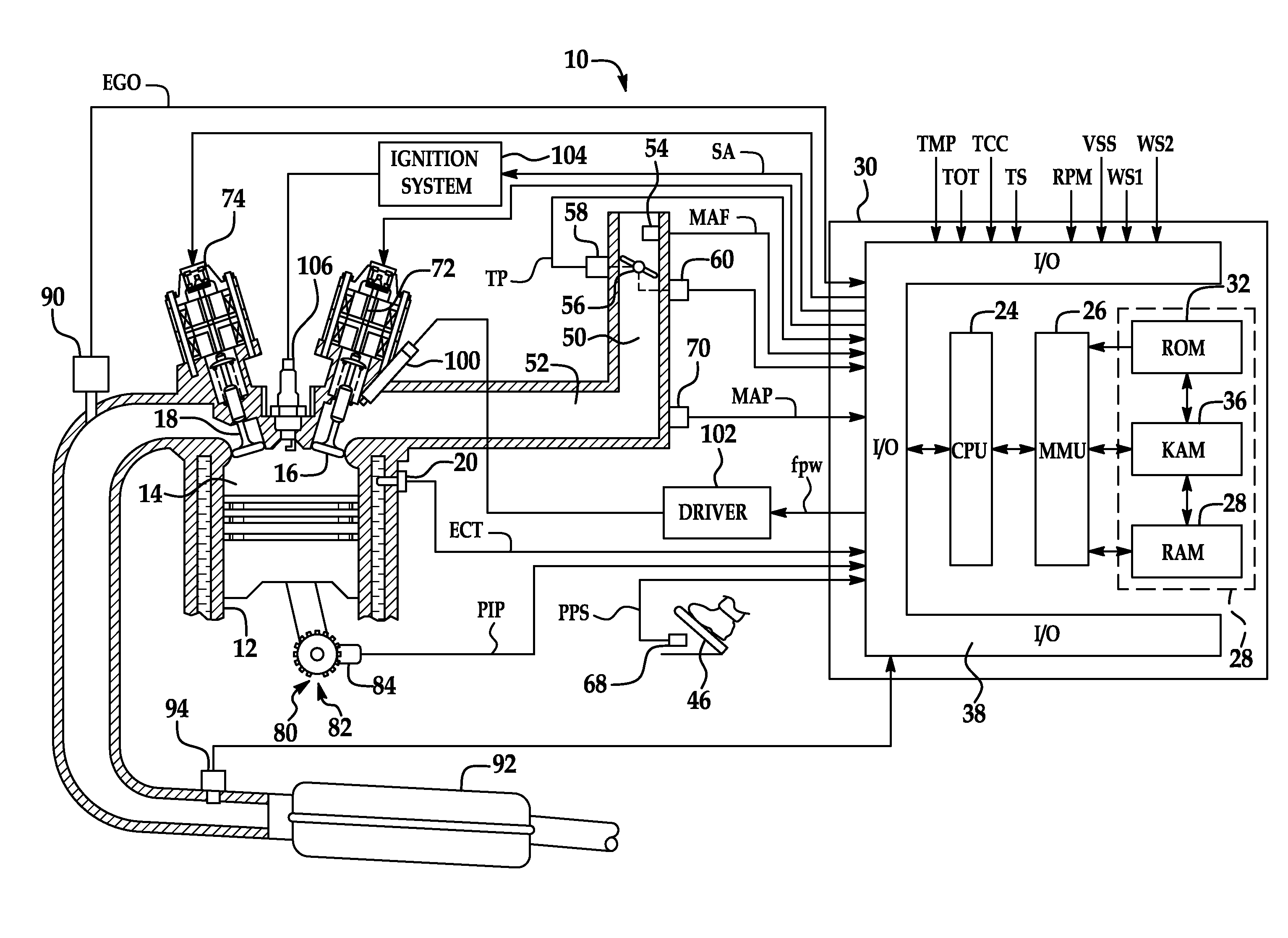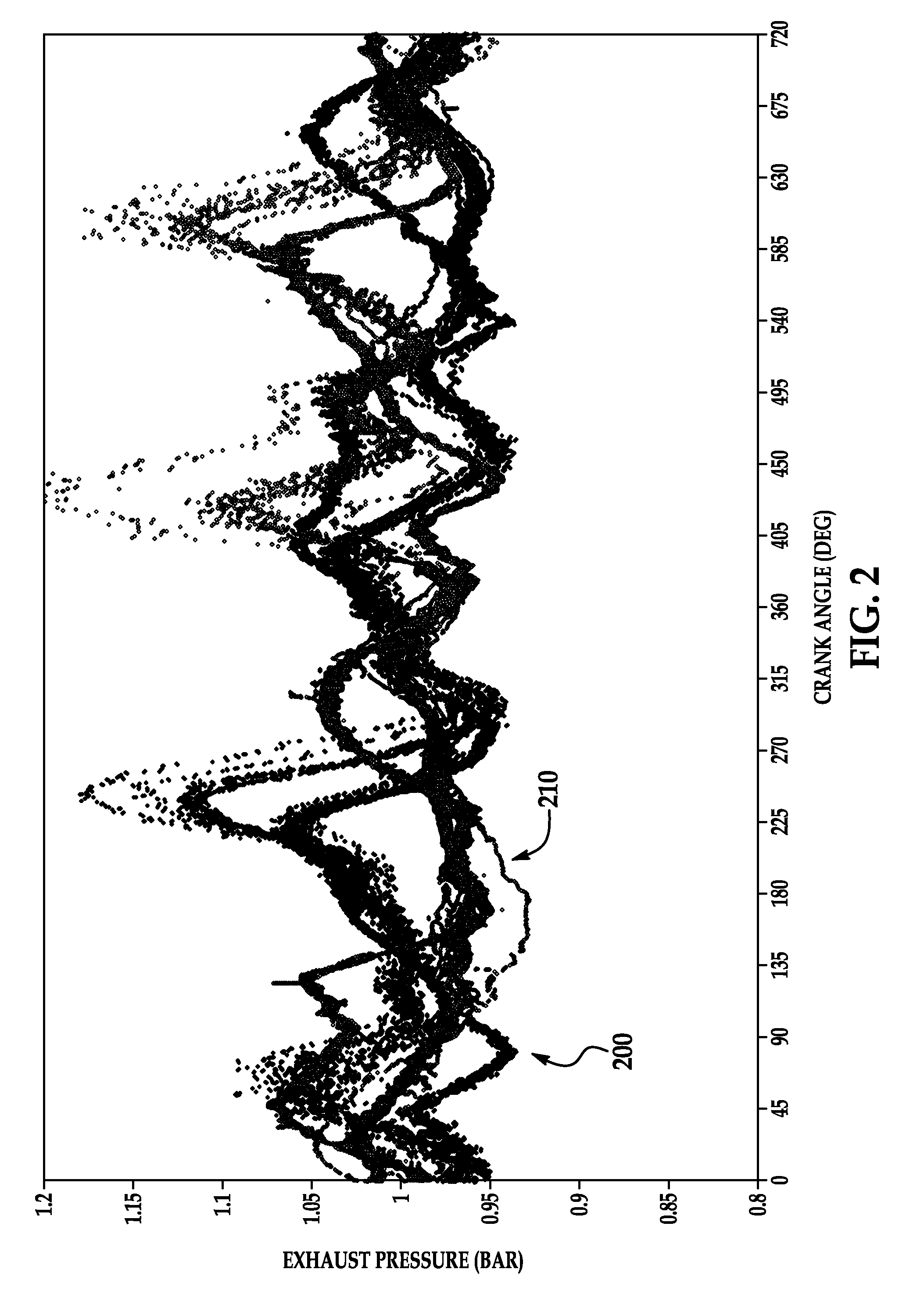Engine control with valve deactivation monitoring using exhaust pressure
a technology of engine control and monitoring device, which is applied in the direction of electrical control, process and machine control, instruments, etc., can solve the problems that the strategy is not believed to provide a reliable indicator for monitoring the deactivation of the exhaust valve, and achieve the effect of reducing or eliminating the potential for increased oil consumption and catalyst poisoning, improving fuel economy, and improving signal-to-noise ratio
- Summary
- Abstract
- Description
- Claims
- Application Information
AI Technical Summary
Benefits of technology
Problems solved by technology
Method used
Image
Examples
Embodiment Construction
[0014]As those of ordinary skill in the art will understand, various features of the embodiments illustrated and described with reference to any one of the Figures may be combined with features illustrated in one or more other Figures to produce alternative embodiments that are not explicitly illustrated or described. The combinations of features illustrated provide representative embodiments for typical applications. However, various combinations and modifications of the features consistent with the teachings of the present disclosure may be desired for particular applications or implementations. The representative embodiments used in the illustrations relate generally to a four-stroke, multi-cylinder port injected internal combustion engine operable in a variable displacement mode with electromagnetically actuated intake and / or exhaust valves and an electronically controlled throttle valve. Those of ordinary skill in the art may recognize similar applications or implementations wi...
PUM
 Login to View More
Login to View More Abstract
Description
Claims
Application Information
 Login to View More
Login to View More - R&D
- Intellectual Property
- Life Sciences
- Materials
- Tech Scout
- Unparalleled Data Quality
- Higher Quality Content
- 60% Fewer Hallucinations
Browse by: Latest US Patents, China's latest patents, Technical Efficacy Thesaurus, Application Domain, Technology Topic, Popular Technical Reports.
© 2025 PatSnap. All rights reserved.Legal|Privacy policy|Modern Slavery Act Transparency Statement|Sitemap|About US| Contact US: help@patsnap.com



